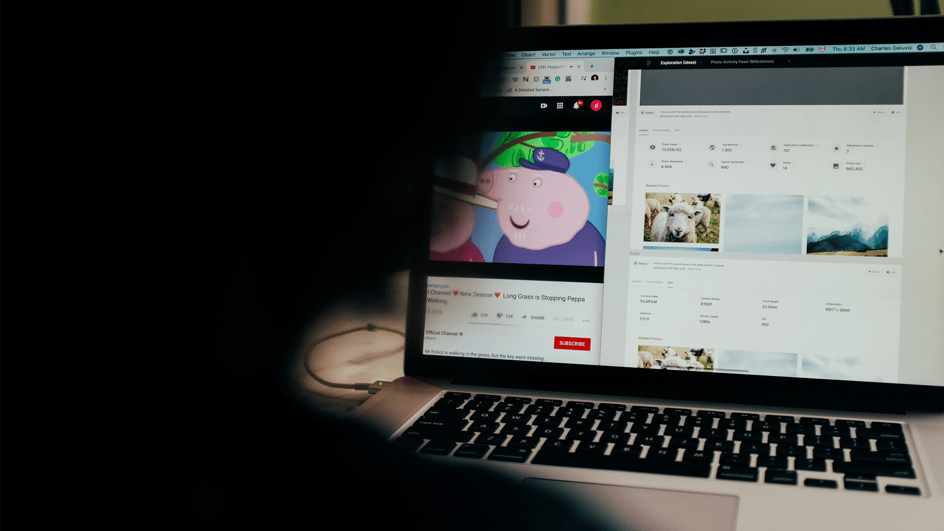Understanding YouTube's Algorithm Updates in 2024 - A Primer for Boosting Your Content
Jourdan Aldredge
Jourdan Aldredge

Apr 18, 2024
Since its launch in 2005, YouTube has steadily risen to become the be-all and end-all of online video-sharing social platforms. Its numbers of users, creators, and advertisers are—by far—the highest among all the social apps, and they only seem to be growing.
YouTube is still very easy to use and encourages new content creators to launch their own brands and build their own YouTube channels. In fact, it’s easier now than ever to get started.
However, while we can help guide you through all types of production and post-production decisions for starting your own YouTube channel (including providing you with some of the best royalty free music for YouTube available anywhere online), what we can’t do for you is master the all-important YouTube algorithm.
That will be up to you, your content, and the ever-changing nature of YouTube algorithm updates for searching, testing, and sharing videos with its users. But we can share with you as much information as possible about how the YouTube algorithm 2024 currently works and what you need to know about its latest updates.
Alright, to get started, let’s quickly define what an “algorithm” is and how YouTube uses one at the heart of how it works.
According to Merriam-Webster, an algorithm is “a procedure for solving a mathematical problem (as of finding the greatest common divisor) in a finite number of steps that frequently involves repetition of an operation.”
For tech companies and websites like YouTube and others, this algorithm is pretty much a catch-all term for all of the efforts and systems YouTube’s developers use to mathematically decide what videos are shown to which users.
This algorithm takes into account all types of data, including:
YouTube also most likely takes into account all other types of user data, history, and trends to help it better understand and predict what videos it will put in front of its users to best entice them and, ultimately, give them what they want.
While many can claim to understand how YouTube’s algorithm works, it’s actually quite impossible to fully understand how YouTube’s complex algorithm works and how it changes from day to day.
What we can offer is a timeline of how YouTube’s algorithm has worked in the past and how it’s being updated today based on information that YouTube (and Google, its parent company) has shared over the years.
Here’s a quick timeline primer for those interested:
Between all these timeline points, though, YouTube has undoubtedly been tinkering with its algorithm even more over the years. It is constantly testing what types of videos do well with what types of users to better curate its content and provide a more personalized experience overall.
As of 2024, here are some of the latest updates and recommendations from YouTube to help guide creators to put their videos in the best position possible to get more views and grow their channels overall.
YouTube has shared that their “recommendation system” works by narrowing down the best sets of videos to offer your audience by paying attention to:
YouTube also advises that you don’t have to be an expert in algorithms or analytics to be successful on YouTube. Instead, you should focus on knowing your audience. YouTube’s algorithm does not promote videos to your audience but rather finds videos for your audience when they visit YouTube. The videos are ranked based on their performance relevant to the audience overall.
One of the prime and best ways for users to see your videos on YouTube is on the YouTube homepage. This “Home” is what your audience sees when they open the YouTube app or visit YouTube.com.
When your audience visits this homepage, YouTUbe will display videos from their subscriptions and videos watched by similar viewers, plus new videos that YouTube is testing to see who they might resonate with. These selections of videos are based on the following:
YouTube also recommends keeping in mind that not all content is eligible for recommendation on the YouTube homepage, especially if it violates any of YouTube’s community guidelines.
Finally, suppose you have more questions about how YouTube’s algorithm works or other frequently asked questions about performance in general. In that case, you can watch the video above about their search and discovery process.
You can also check out individual selections highlighted below:
YouTube always recommends that creators focus on creating the best content possible. Your best bet is to find the right niche for you. YouTube, and the internet in general, is a wide space, but it’s full of smaller niches and communities, so if you can find one that’s right for you, you’ll be in a good position to succeed.
From there, YouTube highly recommends engaging your audience and learning as much about them as possible, then creating content that you think will resonate with this audience with fun, informative, and entertaining content.
Now, YouTube algorithm updates will always change; however, if you can hyper-focus on your niche and build your own audience and brand, YouTube will